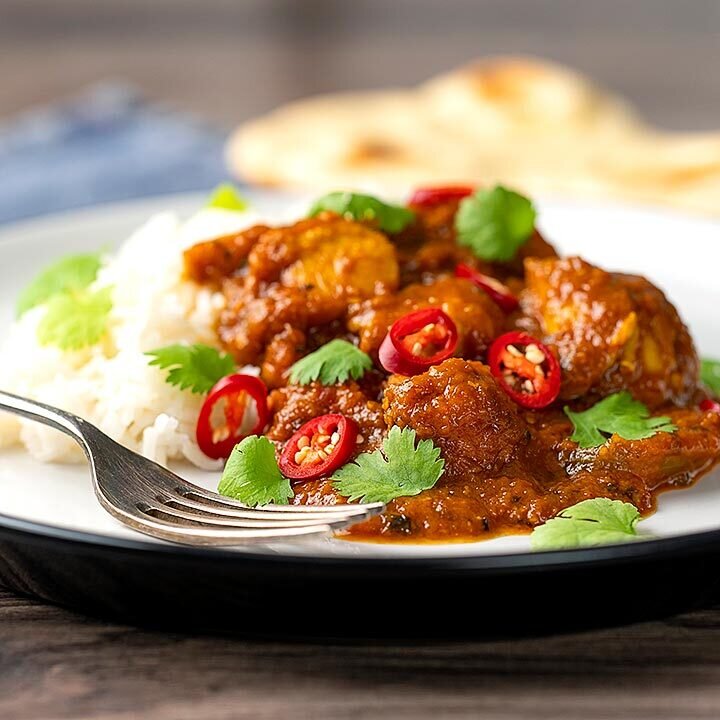
Hidden Gems
29/03/21
Written By: Anika Akthar
So, what comes to mind when you think about Indian food? Is it the tender strips of tandoori-fied chicken in the Chicken Tikka Masala? Perhaps the mouth-watering glaze of the Tarka Daal is your go to. These dishes are great, offering bursts of flavour in every bite. They’re also some of the most popular options in a takeaway order.
Restaurant menus can be confusing for some customers, especially if you are unfamiliar with the cooking terms and techniques. It means patrons might miss out on a potential new favourite. Indian cuisine is so expansive with flavours catering to all tastebuds. It can be easy to stick to what you know, especially if you’re worried about the different ingredients that you’re unaccustomed to. But don’t worry, we’ve got your back. If you’re a foodie and want to know more about the hidden gems of Indian cuisine, then keep on reading to find out more.
Chicken Satkhora
With the majority of Indian restaurants in the UK being owned by Bangladeshi’s, you will
often find some of the dishes on menus hailing from the bays of Bengal, the Chicken Satkhora being one of them. Satkhora, also pronounced shatkora, is a citrusy fruit native to the warm fields of Bangladesh. Named after its seven segments (sat means seven in Bangla), the fruit provides a bitter and tart taste to any curry it’s added into. The smell of a satkhora is in between that of a lemon and lime and is quite bigger in size. One of the closest fruits it resembles would be a grapefruit. It is usually the Satkhora rinds which are used in curry’s to get the natural zesty smell and taste infused into the heart of the gravy.
The chicken satkhora is cooked in a mouth-watering mixture of spices. Adding the tangy fruit into the mixture not only brings out the flavour of the dish, but also enhances the smell of the cooked spices. It’s a flavour explosion like no other. Don’t be afraid to pick this dish for your next order. It’s the perfect choice to expand your palate. This dish is great for those who want a bit of a zesty kick to their curry.
Chicken Moglai
This dish was created during the reign of the Mughal Empire, hence the name chicken moglai. Indian cuisine is known for it’s richness and that is certainly not lost in this dish. Packed with flavours from the aromatic ingredients from spices, milk, yogurt and ghee (clarified butter), the chicken moglai becomes a rich and creamy dish, almost melt in your mouth worthy. This was a common trait in many dishes developed during this empire to serve the rulers. As the chicken is cooked in this thick gravy, the tender fall-off-the-bone pieces will make you want more. This tantalising meal is perfect served with a side of rice or roti. This is a great dish for anyone wanting a taste of what the upper echelons of the Mughal Empire had all those years ago.
Bindi Bhajee
Side dishes are often ignored on the menu. But this is where people may be making a mistake as it’s the side dishes that can really compliment and bring a meal together. We often rush to choose the meat heavy options, forgetting that the vegetable side could possibly be the understated star of the show. Bindi (okra) often gets the wrinkled nose when mentioned. You may picture a slimy and sticky vegetable cloying at the bottom of a bowl.
Bindi bhajee is the complete opposite. A bhajee consists of frying onions until caramelised to bring out those sweet flavours. The bindi is added, along with the spices to enhance the green colour. The charred edges of the bindi compliment the sweet onions, creating an explosion of flavours in the mouth. A simple dish that is so underrated but is worth adding to your order.
Patia
This is a dish that will have your palate dancing. A curry that combines hot, sweet, and sour all in one plate is definitely a great option to open your horizon to the different flavours that Indian cuisine has to offer. The base of the patia consists of tamarind, lime and jaggery that blend together to create that iconic taste.
Rooted in Persian cuisine, a patia is versatile in what can be used. Lamb, beef, chicken, shellfish and even paneer if you want to make it vegetarian, can all be added to this meal. The thick gravy will easily soak into the meat or paneer, creating a blanket of rich sauce, just waiting to be eaten.
The patia could perhaps be compared to its close, but more popular cousin, the dhansak. Both harbouring the same flavours of sweet, spicy and sour, the only difference is that the dhansak is made with lentils and varying vegetables. The patia on the other hand is lighter on the tongue, making it a lot more palatable for new foodies who want to expand their tastebuds. It can be hard to switch up a takeaway order when you have narrowed down what works for your palate. However, by doing so and not trying different dishes, you could be missing out on a myriad of flavours. Venture into diverse tastes and aromas, you may surprise yourself and find a hidden gem in your favourite restaurant’s menu.
To find out more about some of the best curry in Truro, check out our menu.




